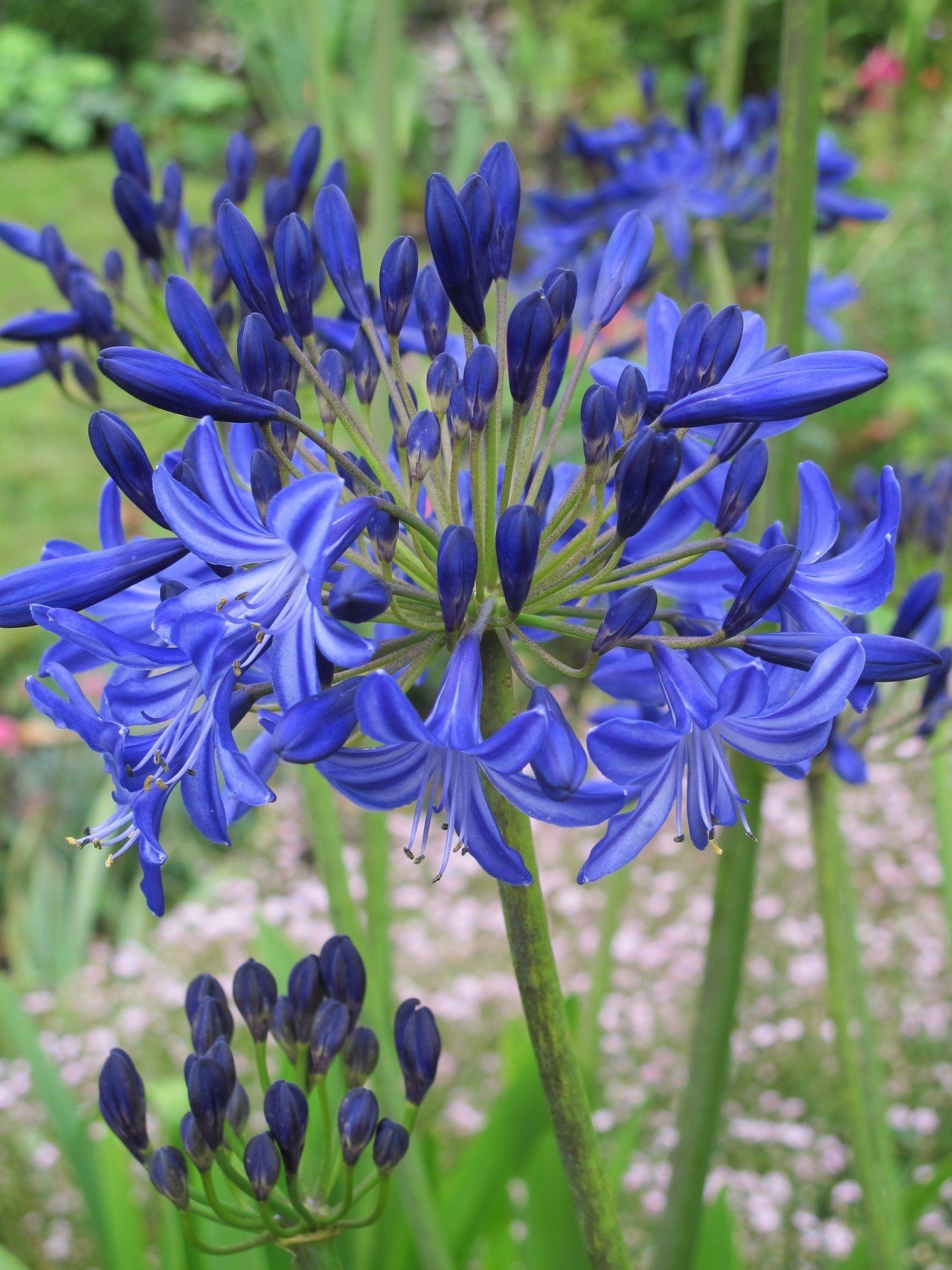Growing Agapanthus: A Full Overview to Beautiful Blooms
Wiki Article
Understanding the Art of Agapanthus Care: Crucial Actions for Healthy Development and Dynamic Blossoms
In the realm of gardening, the farming of agapanthus stands as a satisfying venture for those that seek to nurture these sophisticated blooming plants. From choosing the best range to mastering pruning strategies, the trip in the direction of growing prospering agapanthus plants is complex and holds the key to unlocking the full possibility of these herb gems.
Choosing the Right Agapanthus Variety

When picking the ideal Agapanthus variety for your yard, take into consideration factors such as climate viability, blossom color, and growth practice. Furthermore, think about the environment in your area to make certain the Agapanthus selection you choose can prosper in your specific conditions. Comprehending the growth practice of different Agapanthus selections is essential for correct positioning within your yard.
Suitable Planting Conditions
Considering the ideal environmental requirements is essential for effective Agapanthus cultivation. Agapanthus thrives in well-draining soil with a somewhat acidic to neutral pH level. When planting, pick a location that obtains full sunshine to partial shade. In hotter climates, providing some mid-day color can prevent scorching of the fallen leaves. Agapanthus plants are delicate to cool temperatures and should be protected from frost throughout cold weather.To make sure healthy growth and vivid flowers, plant Agapanthus light bulbs at a depth of regarding 2-4 inches and room them 8-12 inches apart. Including natural issue, such as garden compost, to the dirt can improve drain and fertility, promoting durable root advancement. Mulching around the base of the plants assists keep moisture and subdues weed growth. Regular watering is critical, specifically throughout the growing period, to keep the dirt consistently wet yet not waterlogged.
Watering and Feeding Tips
Maintaining correct wetness degrees and supplying essential nutrients are crucial elements in the treatment routine for Agapanthus plants. When it involves watering Agapanthus, it is essential to strike a balance. These plants like regularly wet soil but are at risk to root rot if overwatered. Throughout the expanding period, water deeply as soon as a week, guaranteeing the soil is well-draining to protect against waterlogging. In hotter environments or throughout durations of dry spell, even more frequent watering might be required to keep the dirt equally damp. Nevertheless, lower watering in the winter to avoid waterlogged problems.Feeding Agapanthus is necessary for advertising healthy development and prolific flowers. Apply a well balanced plant food, such as a 10-10-10 formula, in the very early spring as new development arises. Repeat this application every 6-8 weeks throughout the expanding season. Stay clear of excessive fertilization, as it can lead to lush vegetation at the expense of blooms. Always follow the supplier's directions for correct dilution and application approaches. By adhering to these watering and fertilizing tips, you can guarantee your Agapanthus plants grow and produce lively, resilient blossoms.
Trimming Methods for Agapanthus
Trimming Agapanthus plants at the appropriate times and with appropriate techniques is vital for keeping their health and wellness and promoting optimum development and flowering. The ideal time to prune Agapanthus is in late winter or very check early spring prior to brand-new growth arises. Start by getting rid of any type of dead or yellowing leaves near the base of the plant. Cut them as close to the ground as possible without damaging the emerging shoots.Deadheading spent blossoms can likewise redirect the plant's power right into creating more flowers instead than setting seeds. If you desire to accumulate seeds for proliferation, leave some blossoms to fully grown and dry on the plant.
Bear in mind to make use of clean, sharp tools to make specific cuts and decrease the threat of presenting description conditions. Agapanthus. Regular pruning will assist maintain your Agapanthus looking neat and healthy and balanced while making sure an abundant screen of attractive blossoms
Dealing With Typical Parasites and Illness
After ensuring proper pruning methods for Agapanthus, it is necessary to attend to common bugs and diseases that can affect the health and wellness and vigor of these plants. One common insect that influences Agapanthus is the Agapanthus gall midget.Additionally, Agapanthus plants can endure from root rot if they are grown in poorly draining pipes dirt. By being cautious and taking prompt action versus illness and bugs, you can assist your Agapanthus plants prosper and generate vivid blossoms. Agapanthus.

Final Thought
To conclude, mastering the art of agapanthus treatment involves picking the ideal selection, offering suitable planting problems, appropriate watering and feeding, ideal see this trimming methods, and addressing typical bugs and diseases. By adhering to these vital steps, you can make certain healthy and balanced growth and dynamic blossoms for your agapanthus plants. Bear in mind to on a regular basis check and keep your plants to promote their general well-being and durability.To make sure healthy growth and vibrant flowers, plant Agapanthus bulbs at a deepness of regarding 2-4 inches and room them 8-12 inches apart. By adhering to these watering and feeding tips, you can guarantee your Agapanthus plants prosper and create vibrant, lasting blossoms.
One common bug that affects Agapanthus is the Agapanthus gall midge. In addition, Agapanthus plants can suffer from root rot if they are grown in inadequately draining pipes dirt. By adhering to these necessary actions, you can guarantee healthy and balanced development and vibrant blossoms for your agapanthus plants.
Report this wiki page